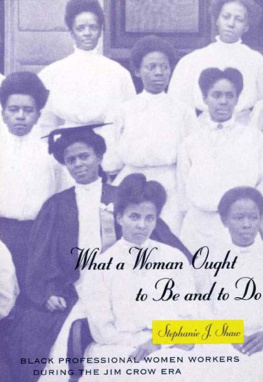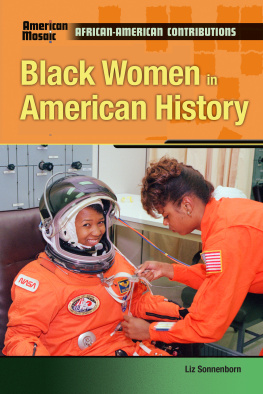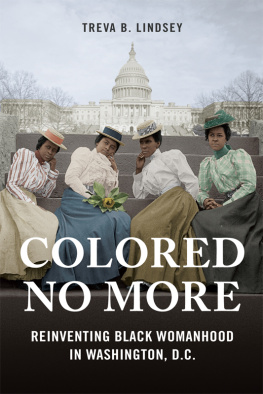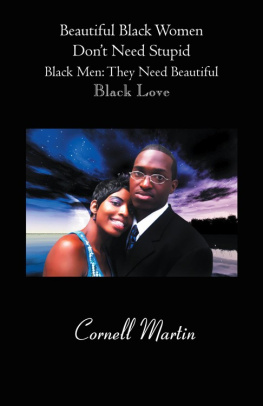Stephanie J. Shaw is associate professor of history and womens studies at Ohio State University.
The University of Chicago Press, Chicago 60637
The University of Chicago Press, Ltd., London
1996 by The University of Chicago
All rights reserved. Published 1996
Printed in the United States of America
04 03 02 01 00 99 98 97 96 1 2 3 4 5
ISBN: 0-226-75119-8 (cloth)
ISBN: 978-0-226-75130-6 (electronic)
0-226-75120-1 (paper)
Library of Congress Cataloging-in-Publication Data
Shaw, Stephanie J. (Stephanie Jo), 1955
What a woman ought to be and to do : Black professional women workers during the Jim Crow era / Stephanie J. Shaw.
p. cm.
Includes bibliographical references and index.
1. Afro-American women in the professionsHistory. I. Title.
HD6054.2.U6S53 1996
331.408996073dc20 9533063
CIP

The paper used in this publication meets the minimum requirements of the American National Standard for Information SciencesPermanence of Paper for Printed Library Materials, ANSI Z39.481984.
This book is dedicated to the blessed memory of
Aaron Vernard Shaw, my father, and Vera A. Shaw Moreland, my sister;
to Jennie Lee Thompson Shaw, my mother;
and to my aunt Vera L. Thompson and uncle Richard Thompson.
FOREWORD
The publication of What a Woman Ought to Be and to Do, a major history of African American professional women, is a signal event.
Stephanie Shaw has studied members of three generations of these women. Growing up after the Civil War but before World War II and the postwar Civil Rights movement, they were raised to be leaders. Although their parents and grandparents may have been slaves, they were not, a fact that empowered them.
With care, clarity, and respect, Shaw first explores the institutions that shaped these women: the family, with its realistic but hopeful child-rearing strategies; the African American community; and the education that prepared them to be social workers, librarians, nurses, and teachers. The young women were to work hard. They were to behave scrupulously, responsibly, exercising self-discipline and self-control. They were to believe in themselves and their aspirations. Look up and not down Little girl, Archibald Grimk wrote his daughter Angelina, and never say die (p. 37). Because they had been brought up with comparative advantages, they were to both set an example for and lift up the African American community. This race consciousness transcended intraracial class divisions. For Shaw, such women exemplify an important ethos, socially responsible individualism.
Shaw next shows how these womensocialized as they weremanaged a triple burden of domesticity, professionalism, and community improvement. As they knew, they did not dwell in a democratic, color-blind America. Jim Crow was a violent and repressive period. If they had high status at home, they had low status away from it. In 1940, for example, only 42 out of the 1200 nursing schools in America admitted African Americans; 28 of the 42 were at historically black institutions. Courageously, with a subtlety and grace white people usually did not recognize, African American women began to work to uplift the white race as well (p. 210).
Poised and serious, What a Woman Ought to Be and to Do also extends a historical method that has interdisciplinary implications. Shaw is one of the notable scholars who stand at the intersection of the histories of African Americans and of women. This vantage point permits them to observe both a complex location and the landscape of American history at large. Shaws account, for example, of African American community-building deepens our understanding of Progressive Era reforms. Moreover, she underscores the historical importance of peoples perceptions. Thought by other African Americans to be capable of strong, active, moral, and productive behavior, African American professional women saw themselves in this way and acted accordingly.
A common complaint about America is that our leading figures have celebrity but no character. What a Woman Ought to Be and to Do tells of women of a heroic and inspirational character. They and their book are to be celebrated.
CATHARINE R. STIMPSON
PREFACE
When I was growing up in the South, family members often went to a local seafood restaurant to purchase takeout orders. Until I was well into my teens, we always went to the back of the restaurant, to the kitchen, to place and pick up our orders. Though nobody ever told me so, I always believed that we went to the back because Mr. Hunter, who attended the same church as my father, worked in the kitchen, and if he saw that the order was ours, he would put extra food in it. I grew up believing that we went to the back door because it gave us special privileges.
When I try to interpret earlier events of my life now, I have to acknowledge that not knowing why we really went to the kitchen shaped my life as much as knowing would have, though knowing the truth would undoubtedly have shaped my life differently. The example suggests not only that it is possible that you cannot understand another persons life without walking the proverbial mile in her shoes, but that indeed you can walk that mile in your own shoes and still not fully understand what you have been through. At the very least, our own understanding is peculiar and perhaps even unique.
I became more intensely aware of the peculiarity of historical experiences as I was working on this book, and so I shall comment on perceptions repeatedly. The professional women who are the subjects of this study fit several categories easily stereotyped from the different viewpoints of both liberals and conservatives. The challenge therefore became how to write about these women not only as I can see them now but also as they saw themselves. Notwithstanding the many ways black womens history intersects with the history of white women and the history of black men, the differences are dramatic and complex. They cannot be explained merely by degrees of oppression. Perception lies at the heart of the matteras it does for the women about whom I write. For black women who reached the age of majority before 1920, the fact that they were not enslaved, as their mothers and grandmothers often had been, was at least as important to themand in some ways more soas the fact that they had no right to vote.
The point is not that each generation was satisfied with simply doing better than the previous one did, but that these women were keenly aware of their collective history. They knew that their forebears had endured slavery. As slaves, their parents and grandparents lived in a socially approved and legally enforced state of poverty, illiteracy, and bondage. Yet they produced and educated these daughters. Thus in one way the daughters could not perceive themselves as powerless, disadvantaged, or handicapped. They were the empowered, the advantaged. Nor did the rampant racism and sexism of society permeate their lives. They lived in a segregated society but mainly in one half of it. And while the impact of racism and sexism on and in African American communities was profound, in these communities black women were enabled as much as they were disabled. They saw endless possibilities for themselves rather than limited ones. And all together, the role model that black professional women represented was not pathological, it was ennobled. They were among the well-educated, self-confident race leaders. They had influence in their community and authority beyond their households. Their lives compel us to understand them in the context of the community in which they lived and worked as well as in the national context.









 The paper used in this publication meets the minimum requirements of the American National Standard for Information SciencesPermanence of Paper for Printed Library Materials, ANSI Z39.481984.
The paper used in this publication meets the minimum requirements of the American National Standard for Information SciencesPermanence of Paper for Printed Library Materials, ANSI Z39.481984.